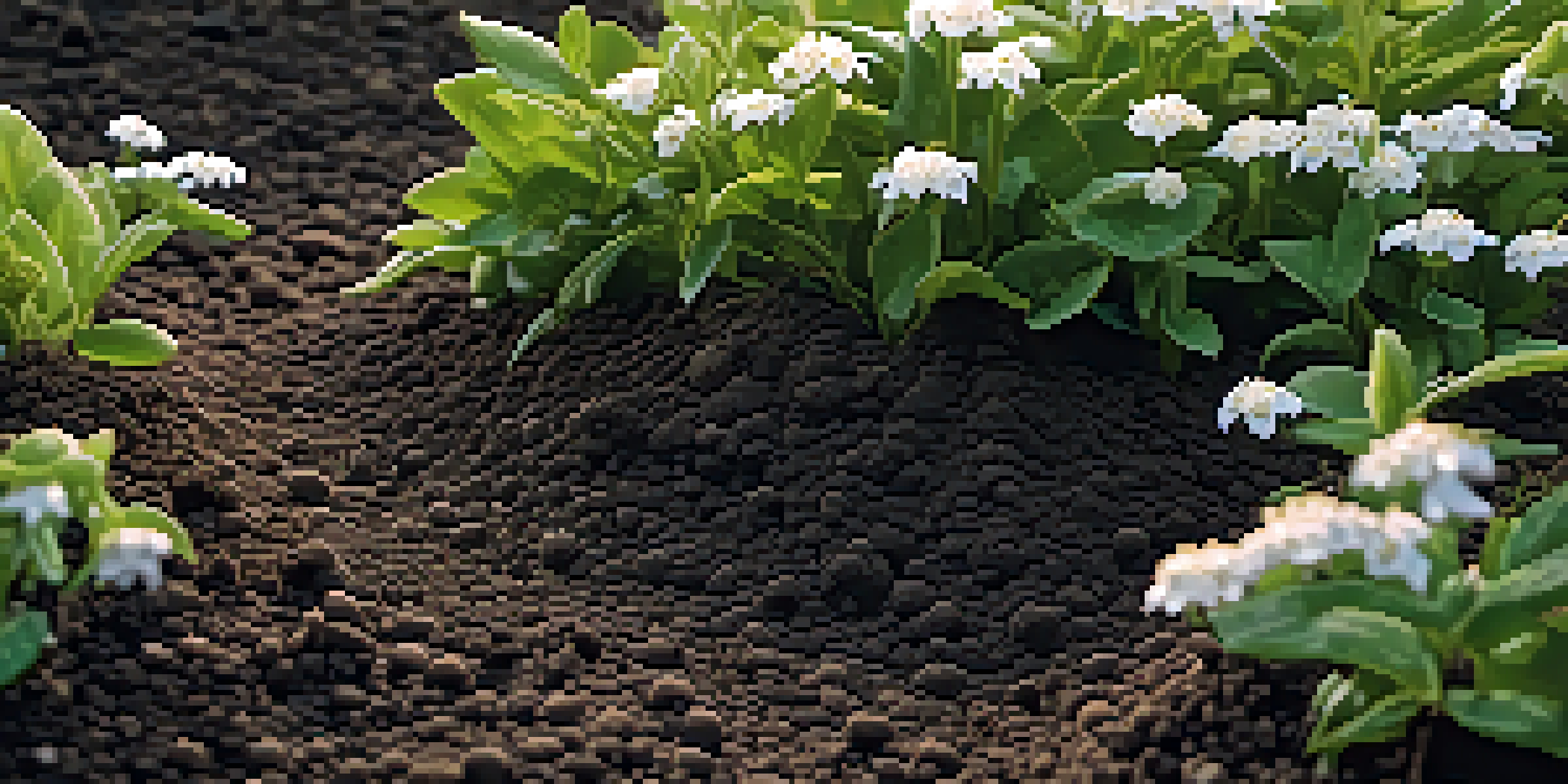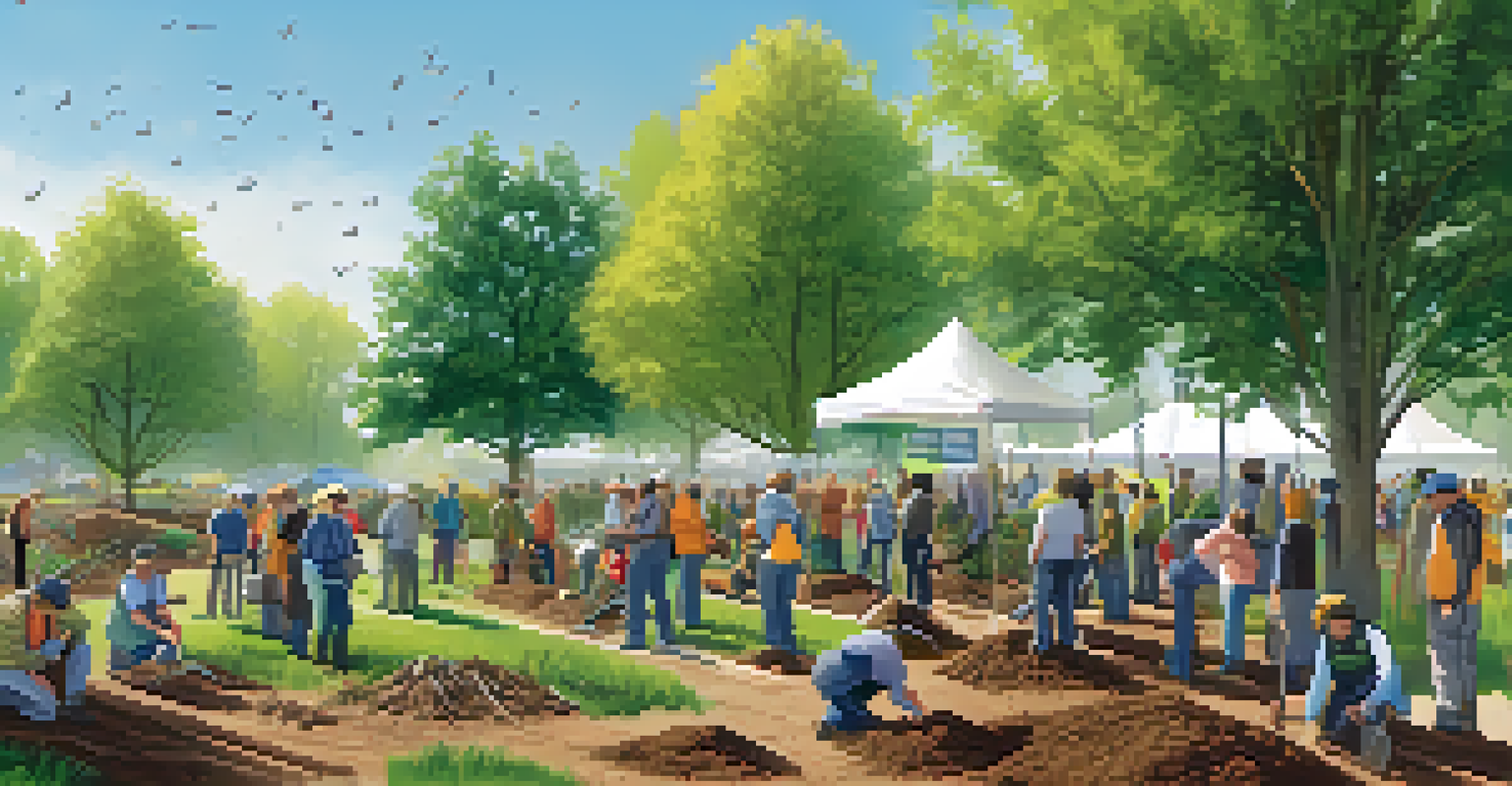Soil Erosion: Causes, Effects, and Prevention Techniques

What is Soil Erosion and Why It Matters
Soil erosion is the process where topsoil is removed from the land due to factors like wind and water. This top layer is crucial for plant growth, as it contains the nutrients that crops and vegetation need to thrive. Without healthy soil, agricultural productivity declines, impacting food supply and biodiversity.
Soil is the foundation of life on Earth. It is a non-renewable resource that supports all terrestrial life.
Imagine a garden where the rich, dark soil washes away after a heavy rainstorm. The plants that once flourished struggle to survive in the depleted ground. This scenario illustrates the broader implications of soil erosion, not just for individual gardens but for entire ecosystems and farming communities.
Understanding soil erosion is essential for sustainable land management. By recognizing its causes and consequences, we can better appreciate the importance of preventive measures to protect our natural resources.
Key Causes of Soil Erosion: Natural and Human Factors
Soil erosion can occur due to natural events like heavy rains, floods, and droughts, which erode soil faster than it can regenerate. Additionally, strong winds can sweep away loose soil, especially in arid regions. These natural occurrences can be severe, but human activities often exacerbate the issue.

Agricultural practices, such as overgrazing and monoculture farming, strip the land of vegetation, making it more susceptible to erosion. Deforestation for urban development and logging also contributes significantly by removing trees that stabilize the soil. Each of these actions diminishes the land's ability to retain its soil.
Soil Erosion Threatens Food Security
The loss of nutrient-rich topsoil directly impacts agricultural productivity, leading to food insecurity and economic challenges.
Urbanization and improper land management practices further worsen the situation. Poor construction practices can lead to increased runoff, while the lack of effective drainage systems allows rainwater to wash away valuable topsoil, resulting in long-term land degradation.
The Impact of Soil Erosion on Ecosystems
Soil erosion has a ripple effect on ecosystems, disrupting habitats and impacting wildlife. When topsoil is lost, plants struggle to grow, leading to diminished food sources for animals. This shift can cause declines in animal populations and disrupt the entire food web.
The health of our soils is integral to the health of our communities and ecosystems.
Additionally, eroded soil can lead to sedimentation in rivers and streams, affecting water quality and aquatic life. The increased sediment can smother fish habitats and disrupt the delicate balance of underwater ecosystems. Ultimately, this can decrease biodiversity, making ecosystems less resilient to changes.
Furthermore, soil erosion contributes to the loss of arable land, which poses a threat to food security. As farmland becomes less productive, communities may face challenges in growing enough food, leading to economic instability and increased reliance on imported goods.
Consequences of Soil Erosion for Agriculture
For farmers, soil erosion can be a devastating reality. The loss of nutrient-rich topsoil directly affects crop yields, leading to lower production and profitability. As soil quality declines, farmers may find themselves spending more on fertilizers and amendments, further straining their finances.
Moreover, as erosion continues, farmers may need to invest in more intensive farming practices, which can lead to a cycle of degradation. Over time, this can result in reduced land value and more significant challenges in maintaining sustainable farming operations.
Natural and Human Causes of Erosion
Soil erosion is driven by both natural events like heavy rains and human activities such as deforestation and poor land management.
The consequences extend beyond the farm gate, impacting local and global food systems. With less food production, prices can rise, affecting consumers and contributing to food insecurity in different regions. Ensuring the health of our soils is vital for both farmers and the wider community.
Effective Prevention Techniques for Soil Erosion
Preventing soil erosion requires a multifaceted approach that includes both natural and engineered solutions. One effective technique is planting cover crops, which protect the soil by providing ground cover and reducing runoff. These crops help to maintain soil structure and nutrients, making them a valuable addition to farming practices.
Another technique is contour farming, where plowing and planting are done along the contours of the land. This method slows water runoff and reduces erosion by creating natural barriers. Additionally, terracing can be employed on steep slopes to transform a challenging landscape into manageable plots, further minimizing soil loss.
Incorporating organic matter, such as mulch and compost, into the soil also enhances its structure and water retention capabilities. This not only helps to prevent erosion but also improves soil fertility over time, creating a healthier environment for plants to thrive.
Community Efforts in Combating Soil Erosion
Communities play a crucial role in the fight against soil erosion through education and collective action. Initiatives that promote sustainable land management practices can empower local farmers and residents to adopt erosion-preventive measures. Workshops and outreach programs help raise awareness about the importance of soil health.
Local governments can also contribute by implementing policies that encourage responsible land use and conservation practices. By providing incentives for adopting erosion control methods, they can foster a culture of sustainability within communities. Collaboration between farmers, environmental organizations, and policymakers is essential.
Community Action Can Prevent Erosion
Collective efforts, such as education and sustainable practices, are vital for communities to combat soil erosion and protect natural resources.
Moreover, community tree-planting events can help restore vegetation cover, which is vital for soil stability. These collective efforts not only combat erosion but also strengthen community bonds, creating a shared sense of responsibility for the environment.
The Future of Soil Erosion Management
Looking ahead, addressing soil erosion requires innovative solutions and ongoing commitment. Advances in technology offer exciting possibilities for monitoring soil health and erosion patterns. Tools like drones and satellite imagery can provide valuable data, helping farmers and land managers make informed decisions.
Research into regenerative agriculture practices is also gaining momentum. These approaches focus on rebuilding soil health and enhancing its resilience to erosion. By prioritizing soil restoration, we can create sustainable agricultural systems that benefit both people and the planet.

Ultimately, a collaborative effort is needed to ensure the future of our soils. By engaging communities, utilizing technology, and promoting sustainable practices, we can combat soil erosion and protect this vital resource for generations to come.